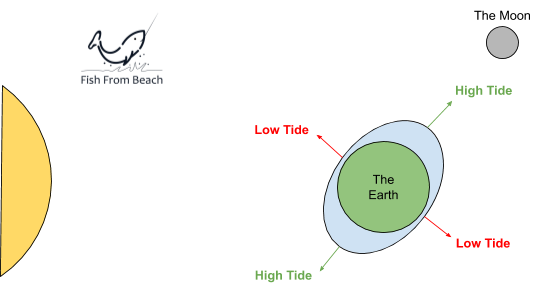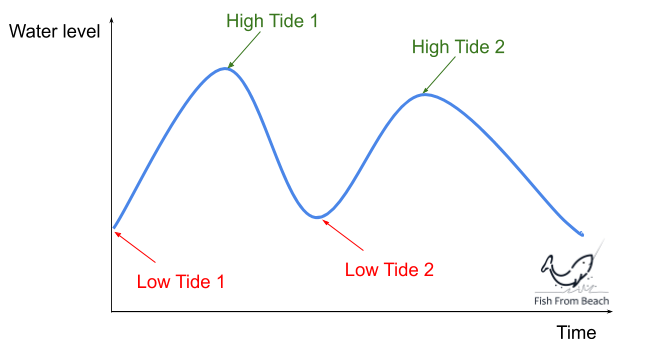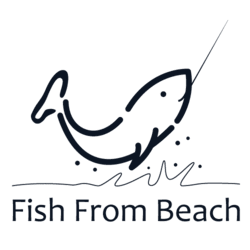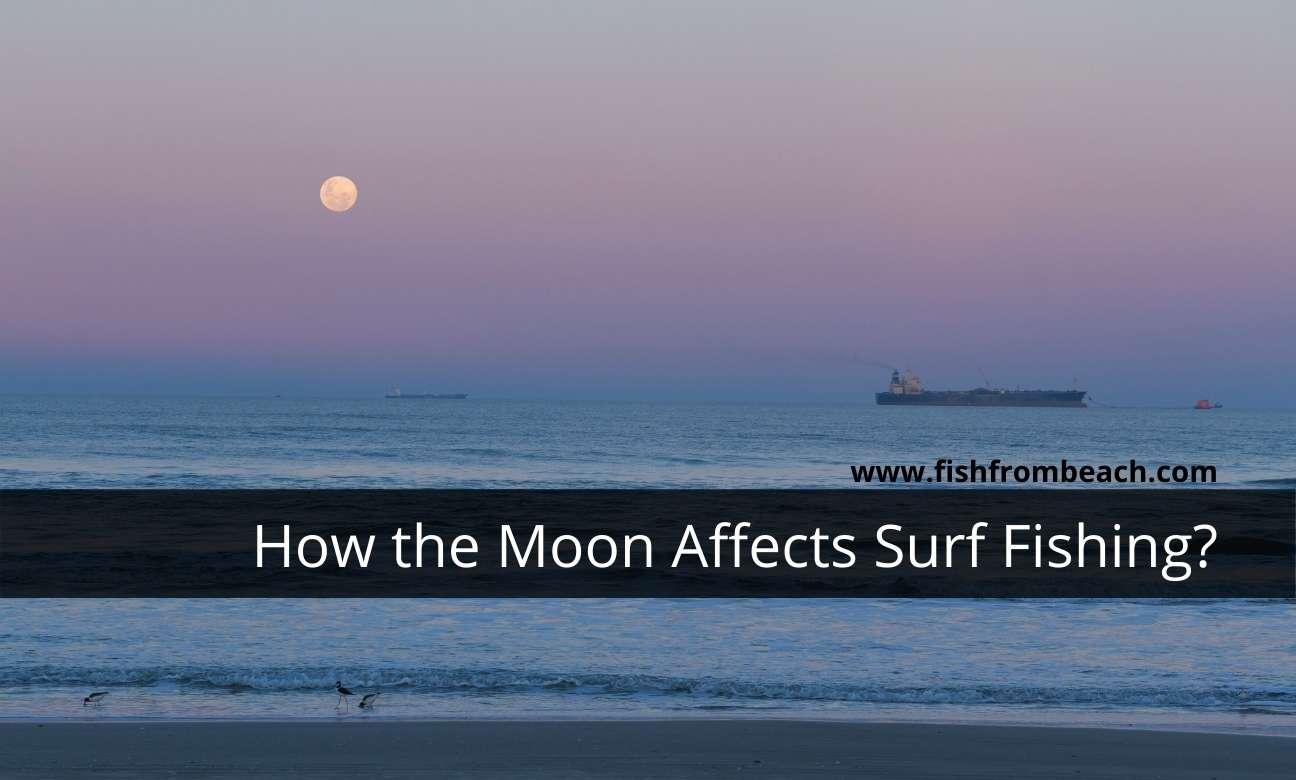Catching a fair amount of fish is a primary consideration for every angler.
I mean, the number of fish you catch is a good indicator of how successful your fishing trips are and how good you are as a fisherman.
But does your catch count only rely on your skills and experience? Aren’t there other factors that dictate your productivity when surf fishing?
For example, is it possible to catch more than usual any time of the month? Is there a particular time that guarantees more captures than others? What about the moon phases? Does the position of the moon at different stages of the month affect anything when fishing off the beach?
Yes, it certainly does!
Understanding the moon patterns in the different stages of the lunar cycle is as significant as choosing the right bait and rods for fishing.
Moon phases determine the level, intensity, and amplitudes of the tide. Also, they play a significant role in fishing productivity. Therefore, anglers should consider the cycles of the moon when planning their surf fishing trips, especially when they want to go at night in search of a large trophy.
In this article, we’ll dig deeper into this topic and discuss everything about the relationship between moon phases, tides, and surf fishing. So without further ado, let’s go.
What the moon phases have to do with the beach?
The moon plays a vital role in tide formation.
The different phases of the moon impact the movement of water, the surf action, and also the behavior of fish.
Long story short, the moon is mainly responsible for all the ongoing coastal and underwater activities.
In the following lines, we will discuss every aspect of this moon-beach relationship.
How does the moon affect the tides?
Tides mean the rise and fall of water levels in the ocean. How do they happen? Well, they happen because the moon and the sun are constantly applying gravitational and centrifugal forces on earth, which causes the oceans and seas to rise or fall depending on the time of day or month.
In simple words, high tide is when the water is at a high level. Low tide is when the water is low.
Now even that the sun is bigger, the moon has more effect on tides because it’s the closest to earth.
Let me explain.
When the moon is above one quarter of the earth, the gravitational forces it creates lift the water on that quarter, while the centrifugal forces lift the water in the opposite quarter on the other side of the earth.

Now, what does this imply? It implies that at every moment of the day; the water is high on half the earth (high tide) and low on the other half (low tide).
It also implies that because of the rotation of the earth, every region in the world experiences 4 tides every day: 2 high tides, and 2 low tides.
In other words, the water level on any beach or surf zone experiences 2 peaks and 2 bottoms every day, which makes the daily water level chart of any beach look like this:

The question now is: How does all this affect surf fishing?
Well, since the moon affects the water level in the surf zone, then it also affects the activity of fish and their feeding behavior.
Let me elaborate.
Typically, fish prefer deeper waters because it provides them with enough cover and space to hunt prey and flee predators.
When the water level is low, fish, especially large fish, do not feel safe and prefer to head offshore in search of more depth.
In addition, fish feed more aggressively in moving waters. Why? Because a moving surf stirs up more nutrients from the seabed and disorients small prey, making them easier to catch.
So the bottom line is, when the moon changes the water level in the sea and causes it to rise or fall, it also affects the living conditions of the fish and their willingness to feed.
Understanding this relationship is therefore very critical to predict when the bite is high or low and thus effectively plan your trips.
For example, at high tide, strong gravitational forces uplift the water level in the surf area, encouraging more fish to move closer to shore. Here, anglers have the opportunity to maximize their fishing score as there will be more game fish within their casting range.
In contrast, when the tidal force is weak, the water level comes down and forms low tide. During low tide, the water gets away from the land towards the ocean. Here, fish drifts away to deeper places because of the lack of water at low tide. This is not a good time for fishing.
The moon phases and surf fishing?
Right from the waxing phase where the moon illuminates light to the final waxing stag, there are eight moon phases in total:
- New Moon
- Waxing Crescent
- First Quarter
- Waxing Gibbous
- Full Moon
- Waning Gibbous
- Third Quarter
- Waning Crescent
Each phase differs in its uniqueness, size, structure, and luminosity and therefore affects fishing differently. However, and in order to make things simple, we will only focus on four phases: First quarter, third quarter, new moon, and full moon. What happens in the rest can be concluded by understanding the transition that happens between the 4 stages.
First & Third Quarter
The first quarter is when the half-moon waxes to a full moon. On the other hand, the last quarter is when the half-moon moves to a new moon.
The first and the third quarter produce enough light for small fishes to feed. These two phases of the lunar cycle are an excellent choice for anglers looking to catch small fishes. However, hunting a biggie is challenging, especially if you have little or no experience in angling.
The tides during the first & third quarters are called neap tides. The tidal amplitudes are very insignificant in neap tides. What does this mean? It means that in the first and third quarters of the lunar cycle, the high tides are lower than usual and the low tides are significantly higher than average.
As a result, the movement on the surf is weaker at neap tides than at any other tides. Thus, they are the most unfavorable time for fishing, especially when aiming for sizable fish that are most happy when the tidal movements are strong.
New & Full Moons
The new moon is the first phase of the moon cycle. Here, the position of the moon lies between the Earth and the sun. Since the moon is nascent, it does not illuminate and therefore is invisible.
The full moon on the other hand occurs where the earth is centered between the sun and the moon. The full moon is the last phase of the lunar cycle and provides full visibility.
These two phases are undeniably the favorite moon phases for surf fishing.
The tides during a full or new moon are called spring tides. They occur every two weeks and they cause the highest and strongest tidal changes. As a result, the high tides of the new and full moon are the highest in the month, whereas the low tides are at the lowest points.
In consequence, the tidal flow is excellent in spring tides, making it the most propitious time for surf fishing. Spring tides are more prolific and rewarding when they happen in the dawn or dusk hours. (Sunrise or sunset)
Conclusion
The moon has an important impact on fish and majorly influences their behavior.
In a nutshell, the moon phases that produce the highest tidal changes and strongest water movement are the best for surf fishing.
As a result, we can easily consider the new and full moon (high tides) as the best moon phases for surf fishing.
With all this in mind, the moon phases are not the only thing to consider before heading to the beach. The weather, season, water temperatures, and fishing time are all factors that might impact your fishing experience.
Therefore, rationalizing the time you go fishing can drastically dictate your rewards. So, mind it, your timing matters.
Some recommended surf fishing gear(*)
Note (*): If you make a purchase through links from this website, we may get a small share of the sale from Amazon or other similar affiliate programs.
Surf Fishing Survey
Help us provide you with better content by answering simple questions about your surf fishing experience and knowledge.
We will put the collected responses together and turn them into valuable information that will help you catch more fish from shore 😉
Note: No personal information will be collected with your answer.


